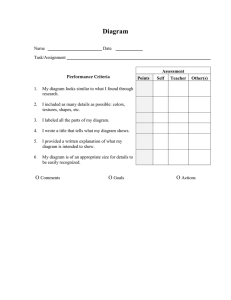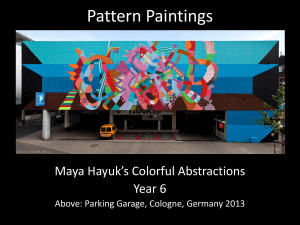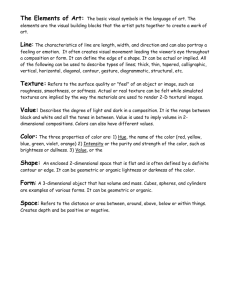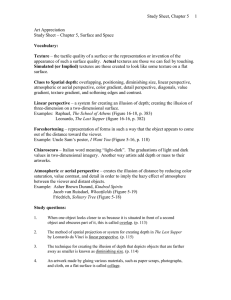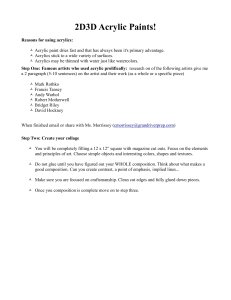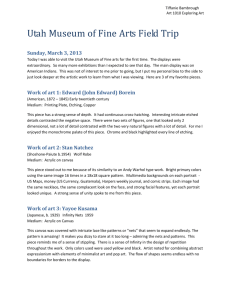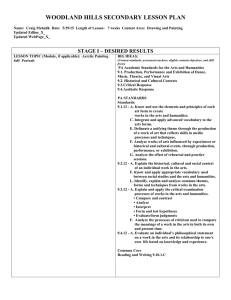(Title of Course) CURRICULUM
advertisement
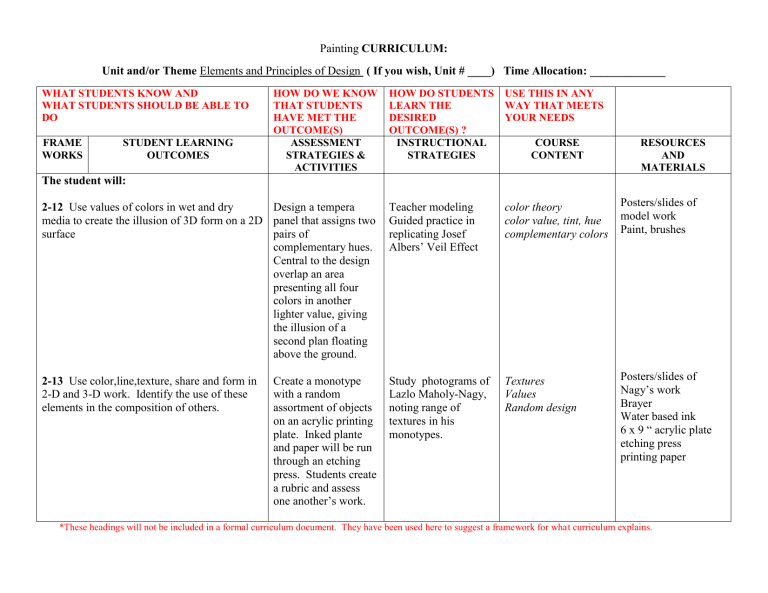
Painting CURRICULUM: Unit and/or Theme Elements and Principles of Design ( If you wish, Unit # ____) Time Allocation: _____________ WHAT STUDENTS KNOW AND WHAT STUDENTS SHOULD BE ABLE TO DO HOW DO STUDENTS LEARN THE DESIRED OUTCOME(S) ? INSTRUCTIONAL STRATEGIES USE THIS IN ANY WAY THAT MEETS YOUR NEEDS 2-12 Use values of colors in wet and dry Design a tempera media to create the illusion of 3D form on a 2D panel that assigns two surface pairs of complementary hues. Central to the design overlap an area presenting all four colors in another lighter value, giving the illusion of a second plan floating above the ground. Teacher modeling Guided practice in replicating Josef Albers’ Veil Effect color theory color value, tint, hue complementary colors Posters/slides of model work Paint, brushes 2-13 Use color,line,texture, share and form in 2-D and 3-D work. Identify the use of these elements in the composition of others. Study photograms of Lazlo Maholy-Nagy, noting range of textures in his monotypes. Textures Values Random design Posters/slides of Nagy’s work Brayer Water based ink 6 x 9 “ acrylic plate etching press printing paper FRAME WORKS STUDENT LEARNING OUTCOMES HOW DO WE KNOW THAT STUDENTS HAVE MET THE OUTCOME(S) ASSESSMENT STRATEGIES & ACTIVITIES COURSE CONTENT RESOURCES AND MATERIALS The student will: Create a monotype with a random assortment of objects on an acrylic printing plate. Inked plante and paper will be run through an etching press. Students create a rubric and assess one another’s work. *These headings will not be included in a formal curriculum document. They have been used here to suggest a framework for what curriculum explains. Please specify if you integrate instruction with another department. Show depth over breadth of coverage where possible.
